Liz Eastmond – 28 June, 2023
The early 1960s sees these young artists making dramatic shifts from the more conventional, largely landscape-related work which dominated local art practice. Art journals featuring international art were becoming more available, international flights more frequent, TV from 1960 (!), and that generation were travelling more: Pat and Gil Hanly returned from London and became the centre of a lively arts scene; Michael Illingworth, from Britain (whose Adam and Eve, 1963, was subject of a charge of obscenity) settled here; import from the Royal College of Art Robert Ellis, who encouraged Billy Apple's critical move to that institution, taught at Elam.
Waiheke
Group exhibition
A Graphic Reminder: Kurt von Meier’s Elam 1962-64
Curated by Hamish Coney
24 March - 7 May 2023
I came home, switched on the 6 o’clock news—a habit I’d picked up under Covid—and saw Gretchen Albrecht and Geoff Thornley absorbed in sorting through sheets of works on paper. It was early 2022. On Waiheke. They were examining works, some their own, from the early 1960s. I was transfixed! Art on the News! It was one of the few positive items at the time. I couldn’t wait to talk about it…over 200 works, by New Zealand artists! They were gifted to the Waiheke Community Art Gallery, via Hamish Keith. He had received them from the widow of American Kurt von Meier. Von Meier had taught art history at the Elam School of Fine Arts 1962—64. He died in 2011. His widow, Marijane Anthony, only recently retrieved the portfolio of works from her home. Now, a year on, and under a change of director, the Waiheke Community Art Gallery displayed a selection of works from this treasure trove. Unsurprisingly, it has generated tremendous interest.
This collection is fascinating because it forms a kind of snap-shot of the early ‘60s, a critical time of transition in the New Zealand art scene. Many of the artists featured were students at Elam then and later became major figures in the story of New Zealand art. Some are working now, still at the peak of their practice: Albrecht and Thornley. Some have few of their early works surviving. These ‘juvenilia’ provide captivating insights in relation to their subsequent development—in ways varying widely from artist to artist. Immediately a wealth of possible ideas for exhibiting and touring these works comes to mind. A coup for a community art gallery.
In his essay accompanying the exhibition, curator Hamish Coney quotes John Perry’s memories of von Meier: “he really blew the place apart, with a whole raft of new ideas and teaching methodologies”[1]. As a newbie art historian myself in the early ‘70s I recall tales of von Meier’s ‘methodologies’. One involved getting the students to stand on chairs and shout ‘Fuck!’. A far cry from the more conventional approaches of subsequent lecturers. Sadly?! But he was informed, lively and up-to-date and his influence clearly crucial. The early 1960s sees these young artists making dramatic shifts from the more conventional, largely landscape-related work which dominated local art practice. Art journals featuring international art were becoming more available, international flights more frequent, TV from 1960 (!), and that generation were travelling more: Pat and Gil Hanly returned from London and became the centre of a lively arts scene; Michael Illingworth, from Britain (whose Adam and Eve, 1963, was subject of a charge of obscenity) settled here; import from the Royal College of Art Robert Ellis, who encouraged Billy Apple’s critical move to that institution, taught at Elam…and let’s not forget ‘Love Me Do/P.S. I Love You‘, ‘Can’t Buy Me Love‘: The Beatles! They came in 1964. Youth Culture and, proto-Counterculture!
When you track through the whole collection on the Gallery’s monitor display you see echoes of Abstract Expressionism, expressive figuration, artists like Ceri Richards, and as, Coney notes, Victor Passmore, Pop Art…so America and Britain, those nations’ whose cultural production was then dominating the media, the mainstream art scene and art history…that was the source of what filters in, frees up, enlivens and changes the scene here.
This first iteration of the collection focuses on a small key group of the artists: Geoff Thornley, Gretchen Albrecht, Pauline Thompson, Pat Hanly, Michael Illingworth, Hamish Keith, Robert Ellis. Albrecht’s dynamic, expressive works expand our knowledge of this early period in her career. Thompson’s intriguing imagery has little in common with her best-known later work—which is interesting in itself. Ellis—not a student—has a fine version of his familiar abstracted road/landscapes. Hamish Keith’s own accomplished work mixes gestural painting with text. Illingworth’s stylized ‘primitivising’ figures link with his wider practice. Hanly’s works clearly connect with his familiar paintings, particularly the ‘Figures in Light‘ series.
For me, it was particularly Thornley’s work that intrigued. Because you don’t see his work that frequently profiled. You could sense a very focused early talent, especially in the drawings. You could imagine a group of these works—there are several—making an engaging show in themselves.
What I felt this exhibition missed was allowing viewers to see examples—even one—of what these selected artists achieved later. A key work, or works. On video if not physically possible. That would have been more appropriate for the adjoining gallery spaces than the two contemporary artists showing there, and of great interest to viewers. Many now, including sadly students, are not fully apprised of the history of New Zealand art over this period and so may not quite get why these early works are so significant. I got talking at the opening to two recent Waiheke residents, from Los Angeles, where one ran a gallery. They hadn’t yet had time to read up their New Zealand art history. I’m sure they would have been impressed had they seen recent works by the chosen artists. What is so fascinating is that many of the works are by artists who subsequently became some of this country’s major figures. Evidently von Meier had a very good eye. Albrecht, for example, who now, six decades on in a career at the forefront of New Zealand art practice, has just this May had three paintings of hers exhibited at Clare College, Cambridge, by prominent British art historian and curator Frances Spalding.
Talks by Albrecht and Thornley would have been interesting. Although, as far as I know, this was not programmed. Plus an issue that did jar for me was the dominant display in the Gallery exhibition space of limited edition digital giclée prints for sale of works by Hanly, Ellis and Illingworth. Maybe better placed in a side gallery?
But this is the first iteration of what hopefully will be many and varied exhibitions to follow, and kudos overall to the Waiheke Gallery for initiating what should be a tremendously interesting future role for this marvellous and unexpected gift to the arts in this country.
Liz Eastmond
[1] A Graphic Reminder: Kurt von Meier’s Elam 1962-64, essay by Hamish Coney, Waiheke Community Art Gallery | Te Whare Taonga o Waiheke.
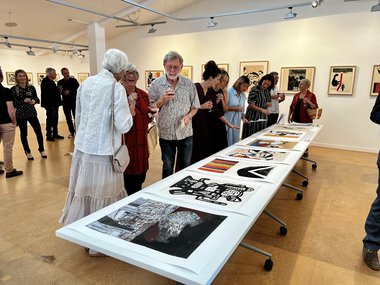
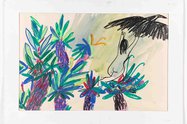
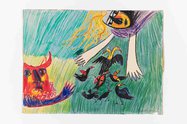
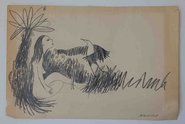
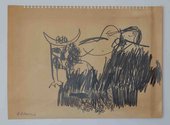


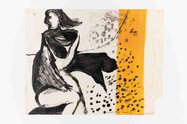

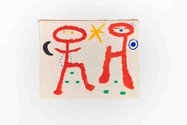

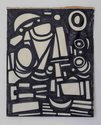
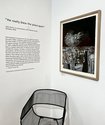

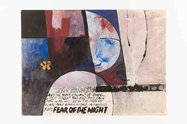



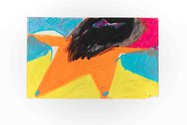


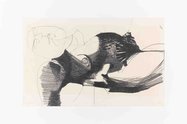
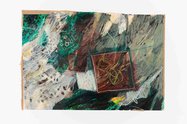
 Advertising in this column
Advertising in this column Two Rooms presents a program of residencies and projects
Two Rooms presents a program of residencies and projects
This Discussion has 0 comments.
Comment
Participate
Register to Participate.
Sign in
Sign in to an existing account.